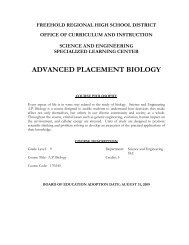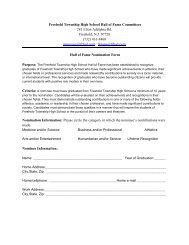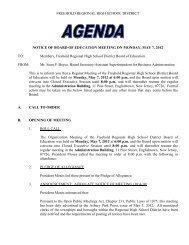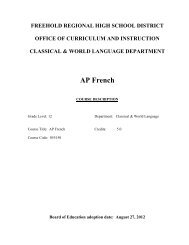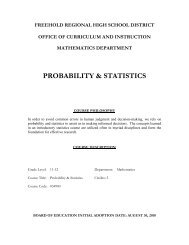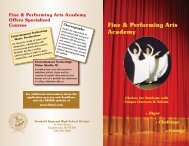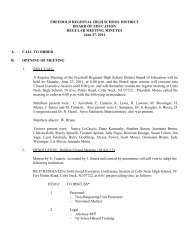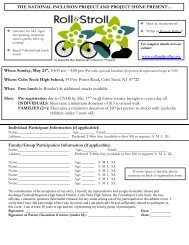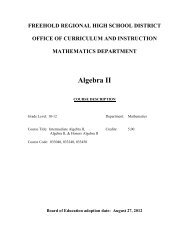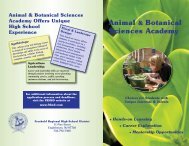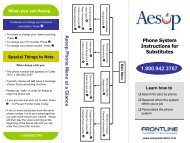LLD Science - Freehold Regional High School District
LLD Science - Freehold Regional High School District
LLD Science - Freehold Regional High School District
You also want an ePaper? Increase the reach of your titles
YUMPU automatically turns print PDFs into web optimized ePapers that Google loves.
<strong>Freehold</strong> <strong>Regional</strong> <strong>High</strong> <strong>School</strong> <strong>District</strong><strong>LLD</strong> <strong>Science</strong>Unit #2 Biology: Characteristics of LifeEnduring Understanding: The natural world is defined by the variety of organisms that have changed over time and are grouped in a taxonomy based uponsimilar traits passed from one generation to the nextEssential Questions: What are the characteristics of living things?Where do living things obtain energy?What is the structure and function of a cell?What are the major systems of the body?What is the Theory of Evolution?How are living things classified?Why do you look similar to your parents?What is DNA?Unit Goal: The students will gain an understanding of diversity, biological evolution, heredity and the relationships among matter, energy and living systems.Duration of Unit: 6 weeksNJCCCS: 5.2B1, 5.5A1-4, 5.5B1-2, 5.5C1Guiding / TopicalQuestionsWhat is the difference betweenliving and non-living things?Content, Themes, Concepts, andSkillsDiscriminate between living and non-livingthings using criteria.InstructionalResources andMaterialsCurrent textbook andresource bindersTeaching StrategiesClass discussion. Students work in pairs, createtwo lists containing living and non-living things.List the characteristics of the living organisms.AssessmentStrategiesWritten or OralAssignmentWhat are the characteristics of aliving thing?Criteria used to determine whether or notan object is livingPicturesGraphic organizersList the characteristics of living things.Given characteristics, students identify objects asliving or non-living.Students work in pairs use checklist ofcharacteristics to determine if an object is livingor non-living.Class participationProject assessmentCooperativelearning experienceStudents make collage of pictures of living things.What is Cell Theory? Ideas that constitute Cell Theory. Internet resources. List components of cell theory. Use video clips toillustrate.What is the structure and Basic parts of a cell and their functions. Activitiesfunction of cell parts?Difference/similarities between plant andanimal cells.ModelsIllustrationsInternet displaysStudents make an edible cell. Use jello-likesubstance as cytoplasm. Insert objects torepresent cell parts.Students color illustrations of plant and animalcell parts using same colors for similar parts andsingle colors for parts that are found in one celltype only.Class discussionProjectClass workStudents create a poster labeling plant and animal10



